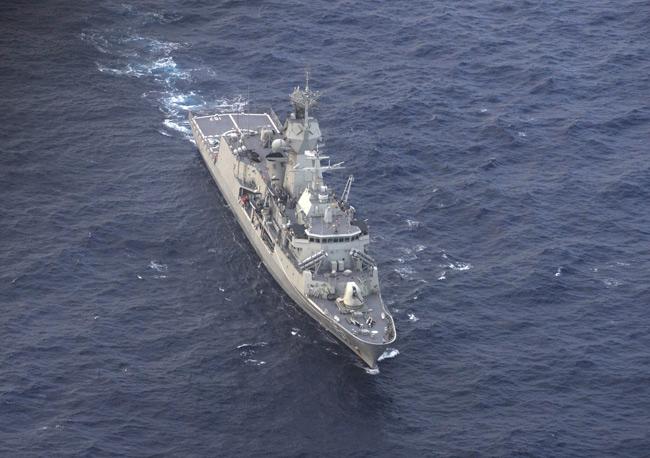Multi-nation search teams hunting for the missing Malaysian plane said they will stop listening for pings coming from the floor of the Indian Ocean and now deploy an unmanned submarine to track down the jet's black box

Perth: Multi-nation search teams hunting for the missing Malaysian plane said they will stop listening for pings coming from the floor of the Indian Ocean and now deploy an unmanned submarine to track down the jet's black box.
The decision was taken after no underwater pulses were detected in almost a week. The last of the four other signals was detected on Tuesday night.
ADVERTISEMENT
"We haven't had a single detection in six days. It's time to go underwater," Australian chief search coordinator Air Chief Marshall (retd.) Angus Houston said, as the search for the missing jet entered into 38th day.

The Australian ship HMAS Perth is guided into position by the RNZAF aircraft to recover a red object during the search for missing Malaysia Airlines flight MH370, off Perth on April 13. Pic/AFP
The Bluefin-21, a probe equipped with side-scan sonar, will be deployed by this afternoon. Side-scan sonar is an acoustic technology that creates pictures from the reflections of sound rather than light, the CNN reported.
Each deployment will last 24 hours. It will take two hours for the Bluefin-21 to get down to the bottom of the ocean; it will scour the ocean bed for 16 hours, and take another two hours to resurface. It will take another four hours to download and analyze the data collected, he said.
Houston warned that the submersible search would be a long process that could yield no results. "It may not," he said. "This will be a slow and painstaking process."
Finding black the black box is crucial to know what happened on March 8 before the Beijing-bound Malaysia Airlines flight MH370 with 239 people, including five Indians, an Indo-Canadian and 154 Chinese nationals, mysteriously vanished after taking off from Kuala Lumpur.
The batteries powering the black box are certified to be working for 30 days, but can still provide weak signals for some more days. Stored in a plane's tail, they are designed to begin sending off distinct, high-pitched signals as soon as they come in contact with water.
Meanwhile, the Australian defense vessel Ocean Shield detected an oil slick last evening, but it is unclear where the oil came from. Two liters have been collected for examination, Houston said.
"I stress the source of the oil has yet to be determined but the oil slick is approximately 5,500 meters downwind... from the vicinity of the detections of the TPL on Ocean Shield," Houston said, referring to the pings detected by the towed pinger locater.
According to Joint Agency Coordination Centre statement, "the Australian Maritime Safety Authority has planned a visual search area totalling approximately 47,644 square kilometres."
The mystery of the missing plane continued to baffle aviation and security authorities who have so far not succeeded in tracking the aircraft despite deploying hi-tech radar and other gadgets.
 Subscribe today by clicking the link and stay updated with the latest news!" Click here!
Subscribe today by clicking the link and stay updated with the latest news!" Click here!







